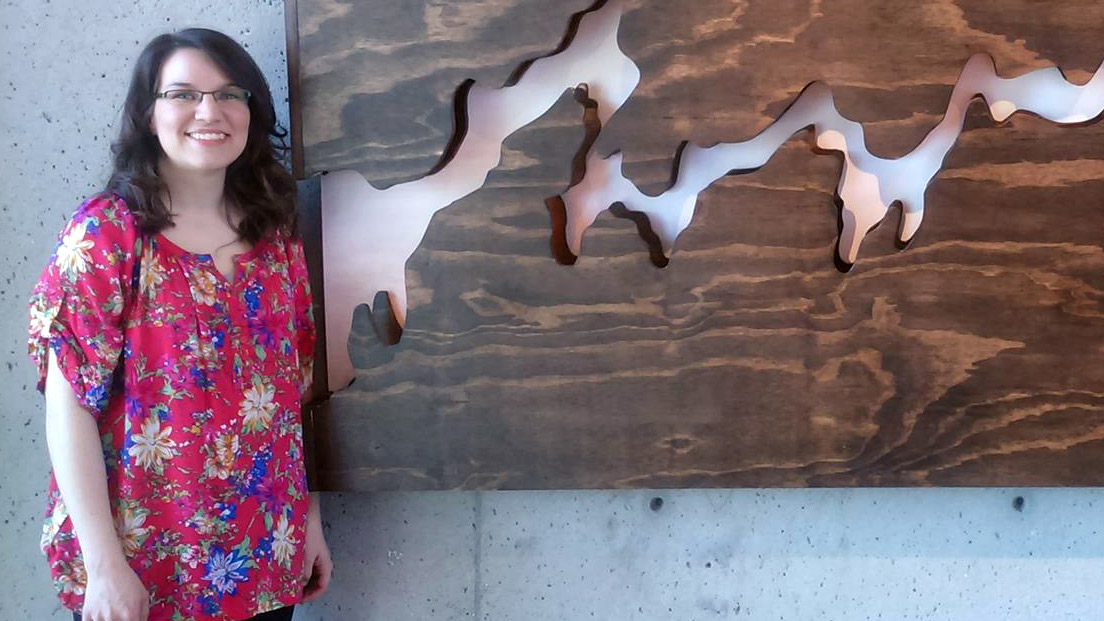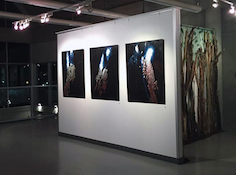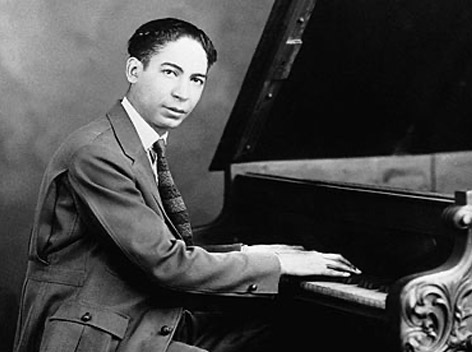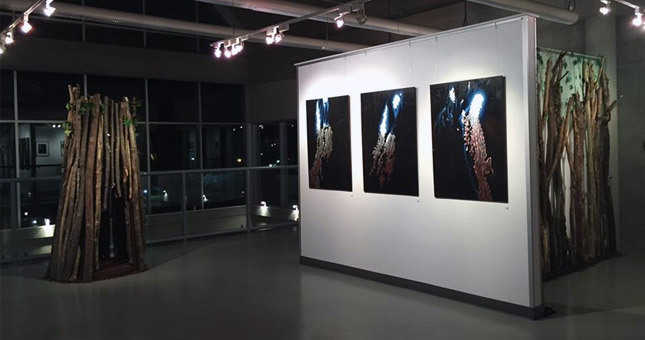
Maria Kim
Life among the Deadwood
An Interview with Maria Gaudin
Maria Gaudin's solo exhibition, Life among the Deadwood: Embodying Grief through Visual Lament, is showing at Regent College's Lookout Gallery until May 6, 2016. This mixed-media show explores themes of grief, lament, death, and rebirth through the landscape of the Pacific Northwest.
You’ve just installed an exhibit in the Lookout Gallery entitled Life among the Deadwood: Embodying Grief through Visual Lament. I understand that the exhibit is the product of your own journey through grief. What started you on that path?
Before I came to Regent, I had experienced a lot of death. Between 2009 and 2010, 7 people in my life passed away, including my grandmother. In addition, in 2009 my family marked the fifth anniversary of my uncle’s death by suicide.
I hadn’t dealt very well with death up to that point. When my uncle committed suicide, I received a lot of poor responses: things like people telling me not to cry at the funeral because it would make my grandparents sadder. It was really damaging. For five years I held in my grief for my uncle, but every year I would spiral into depression around the anniversary of his death.
Finally, in 2009, when my grandmother died, I went to grief counselling. That was the biggest gift I’ve ever given myself. Counselling gave me tools and ways to deal with my grief. The most important tool for me was art: using creative means to process and to express what I was going through. So when I came to Regent, God led me to do more of that.
Where did the title Life among the Deadwood come from?
Life among the Deadwood is based on the Pacific Northwest landscape. I’m from Prince Edward Island. In that part of the country, when things die in the winter, they’re dead: they don’t produce life. When I came to Vancouver, the landscape here really inspired me. I fell in love with the nursery trees and the old stumps. I loved to see that as they decayed, new growth would spring up out of that decay and create trees that were stronger. That process really reflects my understanding of the eschaton: things are full of beauty and new life even in the midst of death.
The second part of your title is Embodying Grief through Visual Lament. When you first began expressing your grief through art, what form did it take?
The first thing I started with was a woodcut of my uncle in 2006. It was a massive woodblock, 2 feet by 3 feet, with multiple layers. During the time when I’m normally depressed, that experience of physically wrestling with materials has become a way for me to deal with my anger and sadness. It gives me something tangible and beautiful to look forward to.
You did this exhibit as an IPIAT (Integrated Project in Arts and Theology) toward your MA at Regent. Tell me about the theological elements underpinning your show.
A major theme in my life has been the importance of looking toward hope even when I’m in a place of darkness and despair. Grief has to be set in the context of hope in the resurrection, in the fulfillment and redemption of the whole of creation. Without that hope, we have a much harder time allowing ourselves to grieve.
Two other major themes were the need to grieve in community and God’s identification with our grief. When we look at the example of Jesus and our suffering God, we see that God grieves. Jesus grieved – he grieved a lot! – and he encouraged us to grieve. We need to do likewise and give others permission to grieve.
How do you see that playing out in healthy and unhealthy ways?
I think one of the most unhelpful things we do in responding to other people in their grief is to give poorly timed words of hope: not allowing space for sadness, denial, anger, regret, and other negative feelings. It’s important to be oriented toward hope, but it’s also important to know when to extend that hope to someone. The only way to know that is to have an intimate relationship with them, so you know when they’re ready to receive it. Until then, we just need to be quiet and listen.
Sometimes the best thing to say is “I don’t know what to say, but I’m willing to be here with you.” That can be more helpful than anything else in a time a grief or depression. When we’re suffering, there’s no simple answer to getting through those feelings. What really matters is having people who can sit with you and be present with you in your despair: that’s vital to recovering your mental health.
The concept of grieving alongside others shows up in your installation piece, The Groaning of Creation. Can you tell us a little bit about that work?
I wanted to create a space where people could feel comfortable to be vulnerable. I also wanted to facilitate a place of quiet and solitude as they enter and exit the gallery. So I created a forest at the gallery entrance by lining two walls with fallen branches that I collected from the Pacific Spirit Park.
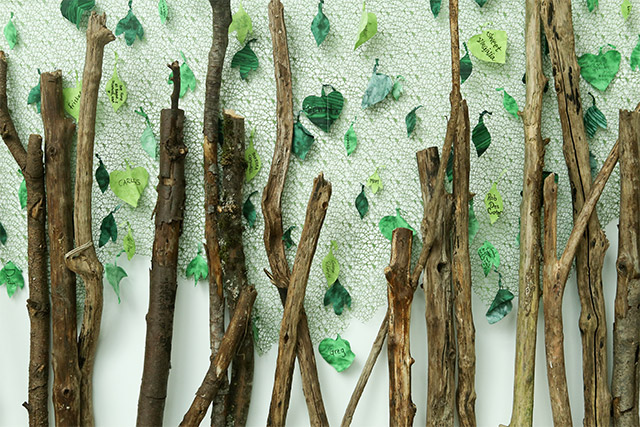
The Groaning of Creation expresses the idea that all of creation cries out for the fulfilment and redemption of the world. It invites people to participate in the world’s groaning by contributing names of people who’ve passed away, dreams that have died, historical grieving, or anything else that is a lament or a prayer to God. People write those prayers and laments on leaves that I’ve made out of fabric and then I attach those leaves to the installation. Each week I go back and attach more leaves to show that creation is still groaning and still continuing its lament.
As I’ve been back to the gallery a few times to see more and more of these leaves added, I’ve seen the forest greening. It’s a vivid image of life coming out of a communal expression of grief.
This is the crux of my entire project. I want to challenge our church and our culture to talk about grief, to share in other people’s sufferings, and to answer God’s call to mourn with those who mourn. I’m being vulnerable in sharing my grief through my artwork. The Groaning of Creation is a call for the community to respond and participate by sharing their own sufferings. My hope is that this will help create a space where others can share their grief in a safe community.
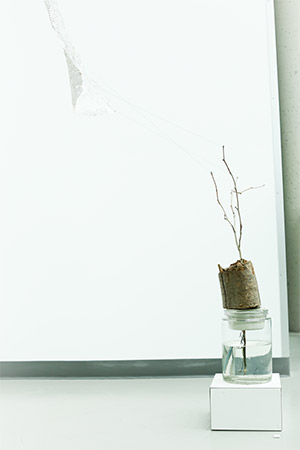
Speaking of your own grief, can you tell us about the piece you've titled Lament?
Lament is the rebirth of a piece that was initially cut. Its current form came out of a conversation with my mom about my grandfather the morning I found out he died. My grandfather had a difficult life. He suffered from bipolar depression and was an alcoholic for 60 years. But at 86, he came to Christ. It was a total miracle. He’s been a huge inspiration in my life and was a big support for my project, so this piece was for him.
Lament is about our communication of sorrows to God. The glass and concrete express the fragility of our lives and our unsustainable efforts to live out of our own strength. The roots, deadwood and branch express our baptism, death, and new life in Christ, while the paper piece coming down from the ceiling represents our prayers and laments to God and his response to us.
How did those themes of prayer, lament, and hope tie into your grandfather’s life?
Most of his life was hidden until my uncle’s suicide. Then we learned about his alcoholism. It seemed like a very hopeless situation, but my grandmother and my mom stayed with him, praying continuously for change in his life. I joined in that prayer for about two years. Then, when my grandmother died, my grandfather hit rock bottom. There was nothing left for him except to reach out to God. And he did.
I saw him go from rock bottom to a life that was just completely in love with God. That has given me hope for a lot of things that seem hopeless. It has been a huge inspiration to see that God is continuously working. He can save us at any time from the worst parts of ourselves and the worst things in our lives. No hope is lost.
Where are you in your own healing process?
I started this project in a period of grief and I ended it in another period of grief. But I’ve come a long way. Now I know when I’m grieving: I know the symptoms. I’ve been able to give myself permission to grieve and I’m no longer afraid to walk through it. I’m able to trust God in the midst of sorrow, knowing that I have come out on the other side in a place of hope before and knowing that that is possible again and again.
